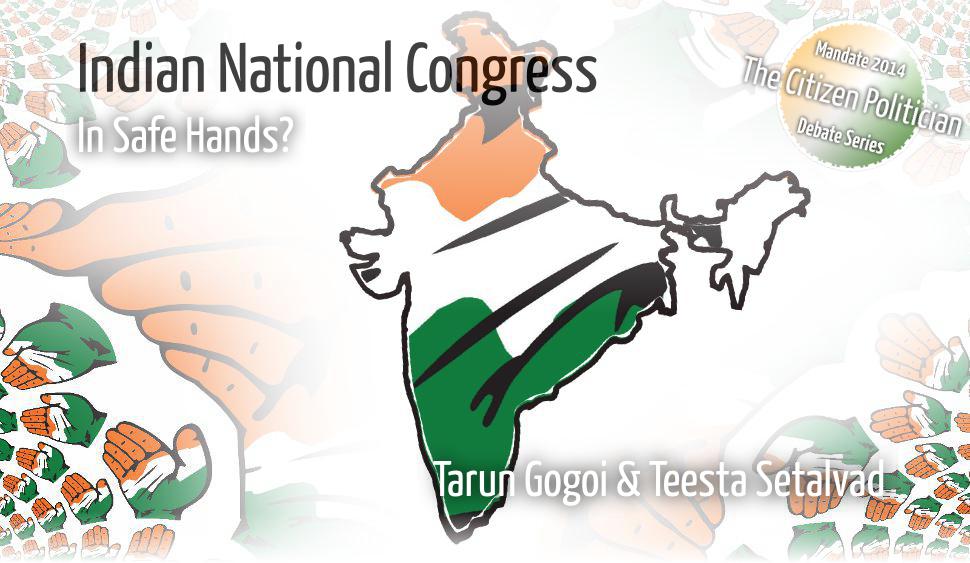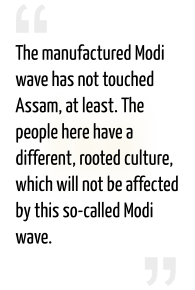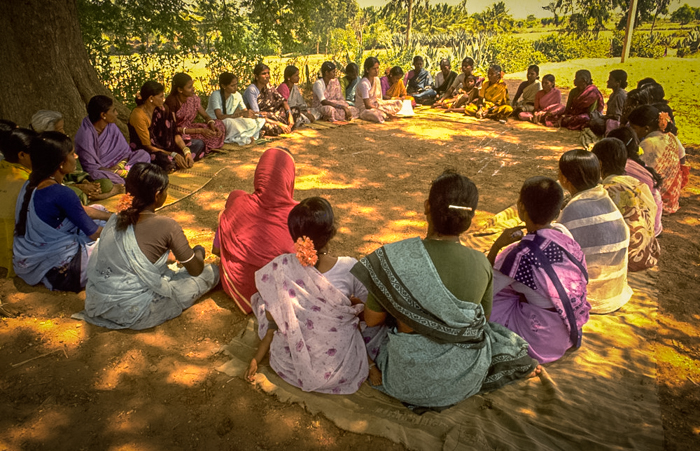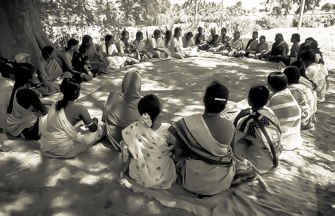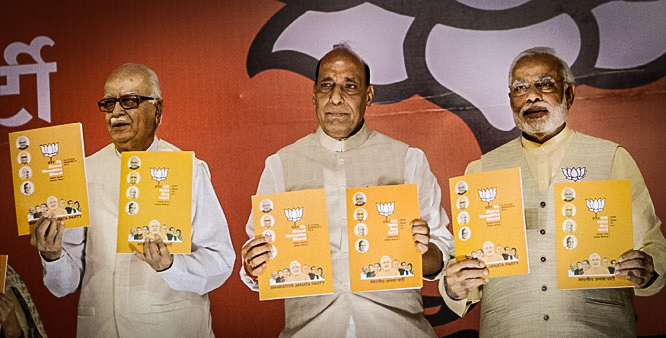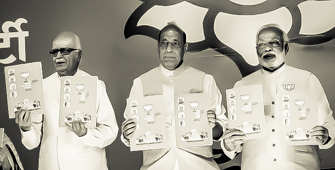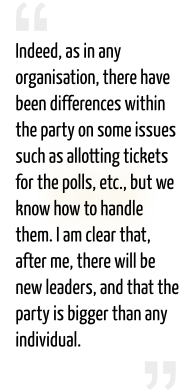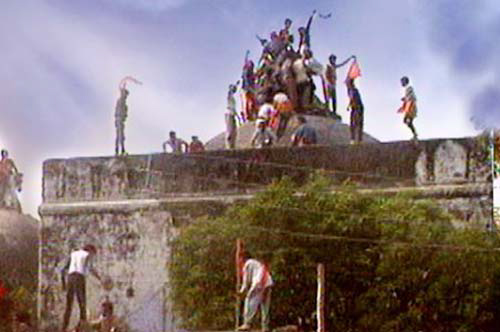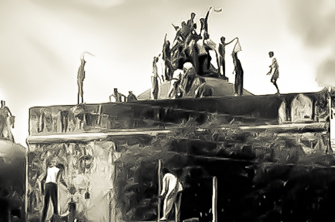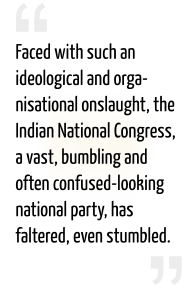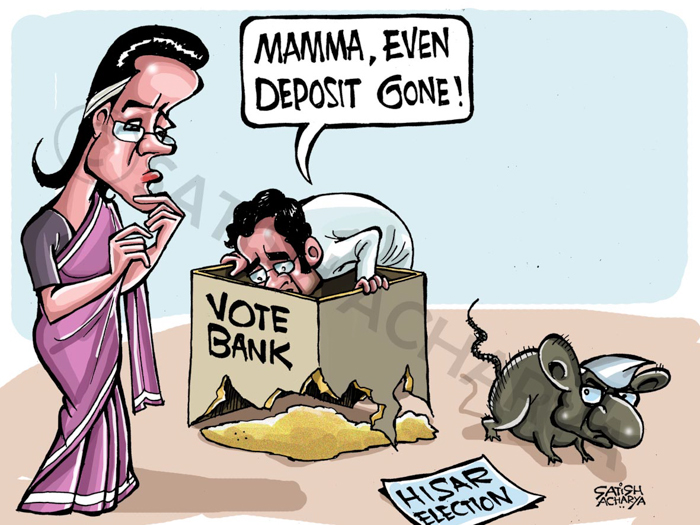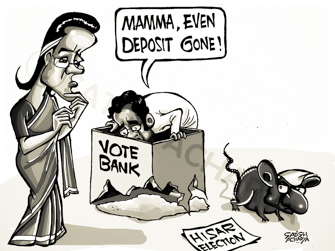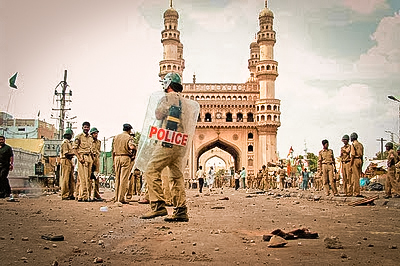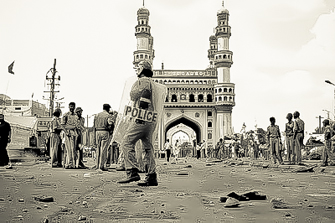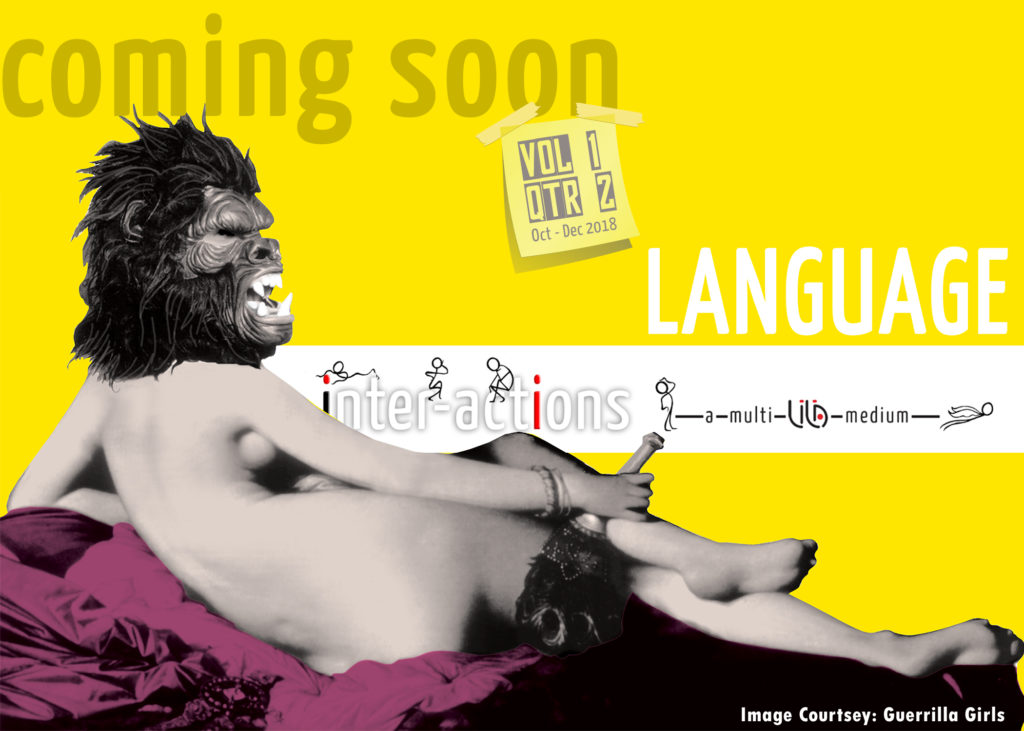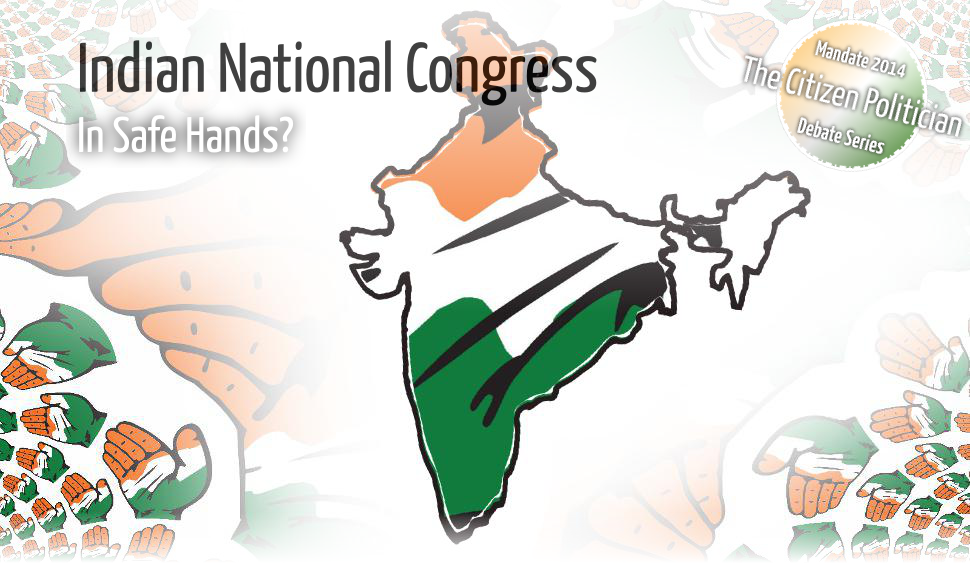
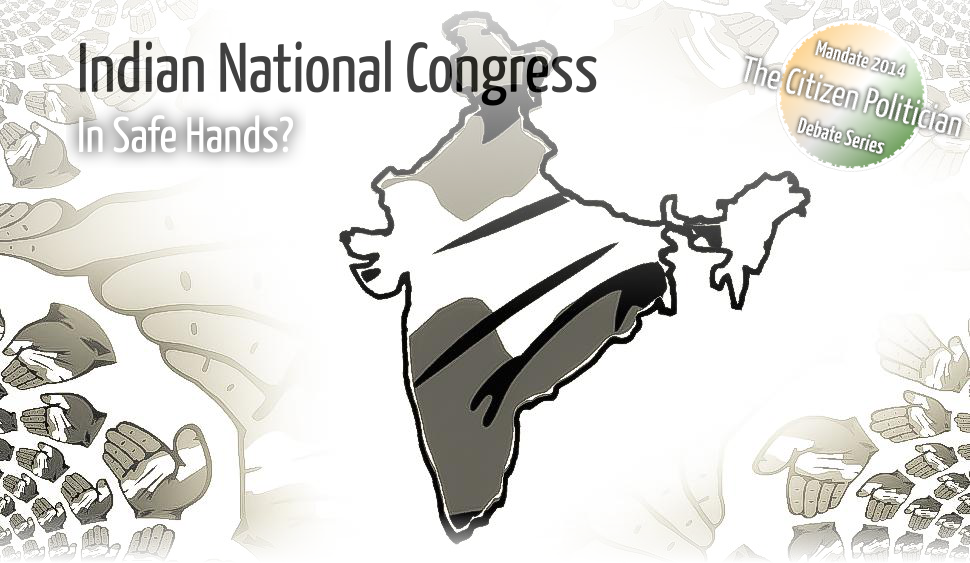
14 April 2014Even as India has gone to the polls, its grand old political party seems to be stuck in a tight spot. The UPA government and the Congress banner have come under severe scrutiny for reasons ranging from non-inclusive growth and corruption to ineffectual leadership and caste-based politics. Has the party mislaid its ‘moral authority’, which Gandhi had held to be its ‘only capital’? Should the Congress hand be written off as too weak to clasp our secular democratic dreams? Or, with the onslaught of the media-boosted Modi wave, is it essential that this party reorganise itself to evolve development and communication strategies pertinent to the sustenance of its core ideology in these times? Such a reimagining seems possible only if the wobbly central leadership of the INC opens itself to learn from the rather stable regions. Tarun Gogoi, three-time Chief Minister of Assam, presents a sustainable model of governance that he claims has worked in his state. In this east-west dialogue, civil rights activist Teesta Setalvad, draws our attention to the profoundly secular role the Congress party must urgently play to stop the fascist forces from taking over the nation. |
Hold the cursor on the illustrations to display animations and descriptions.
The Truth of DevelopmentTarun Gogoi |
Grabbing the Devil by Its HornsTeesta Setalvad |
|
The field of politics has come to resemble a veritable market where those who, with the use of money and without the use of ethics, show the most publicity stunts and sales gimmicks are hailed as ‘leaders’. In the current scenario, the Congress party seems to be facing a lot of resentment. But, in order to save our sense of judgment, it is imperative that we urgently take a close look at the implications of all that is happening in the Indian political theatre today. I am positive that the Congress’ fortunes will be revived — in fact, it is picking up fast, as the artificial colours of the Modi magic are being washed away ever so quickly. The much-touted Gujarat model of development has been exposed by various media platforms. So, it is but natural that the BJP manifesto, when it finally came out, was just a miserable imitation of what had already been affirmed in the Congress’ work. For, the BJP campaign has been running on a fake model of development, incapable to even come up with a manifesto of its own.
The UPA government has helped every state, irrespective of the party in power. Even Modi’s work, whatever he has done, was facilitated by the UPA government at the Centre. I admit that, against the onslaught of the Modi market, the Congress, at the national level, should have begun its campaign earlier. Yet, there is no question of the people of India being soft on Modi. The manufactured Modi wave has not touched Assam, at least. The people here have a different, rooted culture, which will not be affected by this so-called Modi wave. If there is indeed a development wave he has created, why does he need to tour so much, why does he need to burn so much money for promoting himself as the face of the BJP? Now let me try and explain, with the example of Assam, what true development entails. In May 2001, when I took over as the Chief Minister of Assam, the development process in the state had come to a grinding halt. In the first 5 years, we brought about a sea change. During the 10th Plan (2002-2007), the annual average growth rate of Gross State Domestic Product (GSDP) at constant prices showed an increase of 5.33%, a significant improvement over the 1.97% GSDP growth rate during the 9th Plan. It has steadily increased since then — GSDP at current prices during 2012-13, in quick estimate, is 12.56%. The debt-GSDP ratio has come down from 30.83% in 2005-06 to 18.52% in 2012-13. I quote these figures only to mention how the state finances have been very stable through the last decade. We have been commended by the Planning Commission and the successive Finance Commissions. The veracity of the above claims would be proved if one analyses how the state has coped well since 2008, when there was economic recession and fiscal compression globally and nationally. The national and the global situations do affect us, but we have been able to sustain our development through a solid programme aiming at understanding and reaching out to various sectors, regions and communities. In order to ensure greater connectivity of rural areas with the main centres and better interaction among various demographic sections, we have steadily improved our infrastructure and communication facilities. The whole lopsided emphasis on urban development in today’s BJP propaganda has to be seen against the reality of an Indian majority that still lives in remote rural areas. Our ideology, rooted in self-reliance and drawing its inspiration from Mahatma Gandhi, has prompted us to invest in self-help groups and skill development at local levels as part of our rural and agriculture development programmes. It is not possible for any government to hand out jobs to everyone — what must be done instead is to equip the people to be responsible. The political empowerment of women through The state has to ensure that the citizens enjoy good health, adequate education, and ample facilities to be able to contribute responsibly to the society. This also means understanding the potential of the land, and developing it accordingly. For instance, in Assam, we are tapping into the tourist attraction of the place to create more employment opportunities. Also, considering the urgent need to empower our women to participate in the democratic process, we have reserved 50% seats for women in Panchayati Raj institutions and in urban local bodies. Our idea of development is grounded in such an organic understanding of our land and its people, and not dependent on any imported idea of urbanity. It is this genuine paradigm of development that I would like to propose as an alternative to the fake Gujarat model. The fakeness of the Modi camp became apparent when, after launching a huge media campaign to project Modi as a decisive leader, the BJP could not even release its manifesto in time. My state went to polls without any idea of what the BJP was offering the country. On what basis were they expecting my people to vote for them? So, I don’t bother about how many rallies Modi has addressed in Assam; I know for sure that our people will reject this phony brand of self-centered politics. The BJP leaders presenting their manifesto One major item in the BJP manifesto is the Uniform Civil Code, which is against the pluralistic spirit of this country, especially of a space as diverse as the North East with all its various tribes and communities. I do accept that contentious issues remain in Assam, and that there have been shortcomings on our part in tackling issues like ethnic conflicts. But, by and large, peace has returned to our state. Without peace, can there be the kind of development that I indicated? We have been able to check insurgency to a large extent. We brought the Kokrajhar riots under control within 60 hours. Lakhs of people had to flee, but in a year, we rehabilitated them. Contrast this with how Modi had handled the Gujarat riots. Again, to distinguish between the liberal attitude of the Congress and the Modi-brand of communalism, I want to highlight the difference between our stand about anybody fleeing a place due to political or religious persecution, and theirs. We hold that such a case should be considered on humanitarian grounds, whether the person is Hindu, Buddhist or Muslim. On the other hand, Modi plays the Hindutva card by saying that Hindus fleeing other countries should be given asylum in India. The Modi-infested media have tried to draw some parallels between our stance and his, which are all absolutely incorrect.
One thus sees what a dangerous proposition it is to even think of the BJP as a substitute for a party like the Congress, whose genuinely democratic and truly developmental aspirations are beyond doubt. Indeed, as in any organisation, there have been differences within the party on some issues such as allotting tickets for the polls, etc., but we know how to handle them. I am clear that, after me, there will be new leaders, and that the party is bigger than any individual. The whole criticism leveled against what the media and our political opponents call ‘dynasty politics’ has to be reviewed, too. Is it not natural for a person who has been born and brought up in a politically charged environment to aspire for, and be part of that world? And, what is wrong if one proves to be an eligible candidate? Isn’t this true of any field of knowledge or action? One must remember that even if one comes from a political family, one has to prove one’s mettle to get elected by the people. What India must at the moment be concerned about is how to support a strong secular democratic front against the rising communal forces that are threatening to kill our diversity, our pluralistic ethos, and all our chances to develop holistically as a country. To play this out effectively, there is certainly no match in the country for the Congress party with its rich experience in governance and outreach. |
The curious circumstances of our day seem to demand an urgent look back at India since the mid-1980s. Honestly and squarely. This retrospective glance, especially on the crucial issue of a secular, democratic polity vital to our fundamentals as a nation, requires Indians, particularly the numerical majority among us, to admit to the insidious consolidation of a distinct and aggressive majoritarian consciousness and vote-bank. That it was those organisations, forces and political parties that had conspired and gloated in the cold-blooded killing of Gandhi — even distributing sweets at his assassination— and those that still nurture the dream of India becoming a Hindu Rashtra, which have been responsible for this rightward, majoritarian shift, is stating the obvious. We, of course, know how the BJP has been catapulted from a mere 2 seats to a whopping 182 by the agency of the Ramjanmabhoomi agitation. The Ramjanmabhoomi agitation increased Here, one is compelled to take a tangential step, and ask a few crucial questions: how have those extreme right forces been able to implement their agenda even as a Congress government ruled at the Centre? How could they foment violence on Bombay’s streets while Sudhakarrao Naik fiddled? Don’t the intelligence agencies and the ATS/STF wings of the state police, even in Congress-ruled states, pick on young Muslims, destroying lives? Perhaps, the genocidal pogrom of 2002 in Gujarat was the sole exception to such complicity, taking the brazenness of these forces – RSS, BJP, VHP and BD – to an all time high, emboldened by a fraternal government in New Delhi? Attempting to find genuine answers to such concerns is the key to understanding how proto-fascist forces are at work in India today. Let us begin this discussion by looking at what secularism means, and how it has been severely damaged in our country in these times. First and foremost, the term signifies equality of life and opportunity — equality before the law and discrimination towards none. It should manifest itself in adequate representation in the workplace, good access to resources and livelihood, and most of all, safe living and security. For the proto-fascist forces, this definition of secularism is anathema. For example, the BJP has grown in power and numbers through the escalation of hatred and violence, since it is inherently committed to ensuring superior citizenship rights for the Hindu majority. Evidently, without the well-funded cadres of the RSS, the BJP would be nowhere politically. Putting minorities in their place, first through barbaric violence aided by state actors, and thereafter through compromised collaboration where they cannot eliminate such a large minority, is, in the words of my dear friend RB Sreekumar, former DGP of Gujarat, “the post-laboratory stage of the Hindu Rashtra.”
Faced with such an ideological and organisational onslaught, the Indian National Congress, a vast, bumbling and often confused-looking national party, has faltered, even stumbled. Today, after the positive mandate of 2009, disillusionment against its style and methodology of functioning has wreaked confusion among the voters who enthusiastically supported it over a decade. There might be rare instances of stability and rather acceptable governance in some states under the Congress today, but that does not absolve the party of its greatest failing in these times — its inability to stand up strongly against proto-fascist forces, especially when it comes to countering institutionalised bias within organs of democratic governance such as the police, the intelligence agencies, and the educational apparatus, thus in effect becoming complicit in nurturing or turning a blind eye to the communal forces. Obviously, this party has grown used to crude electoral calculations based on majority and minority, caste and caste, Indian versus India. I will not speak of scams because corruption has tainted even the BJP-led states, including Gujarat. It is only a compliant media that has shielded Narendra Modi from this negative label. As far as the common person is concerned, corruption is not linked to the Congress alone, and it has to be dealt with in any case. What is seriously lacking in our national assertion is a lived, breathing commitment to the fundamentals of secularism, representative democracy, free access to jobs and livelihood, equality before the law, and above all, accessibility of the top rung of the national and state leaderships.
There is an independent and powerful section among different Indian communities — and I do not mean the religious denominations here — that is fundamentally fair and non-partisan, but which would like to deal with the issues of institutionalised bias and partisan behaviour such as communalisation of the police force, intelligence agencies and even state and non-state employment structures, in a civilised, direct, and modern way. But to do so vocally and effectively, the leadership, national and regional, of India’s largest and oldest party needs to be itself, irrevocably committed to fair play and the basic tenets of the Indian Constitution – to the history of its own existence. Instead, the Congress today responds to a majoritarian discourse set by a rabid, hate-filled and determined religio-rightwing opposition, diluting its own language, colouring its public posturing and, finally, acutely disappointing its enthusiastic support base. Corrective actions on several key issues of secularism, In policy terms, over the past 10 years, it has tried to shift gear and deliver, attempted a discourse on representative democracy, and half-heartedly tried to bring in a law to prevent communal violence. Even as the INC takes a few steps forward, large sections within its own apparatus, influenced by the sharp rhetoric of the extremist voices, force a back-peddling. It is only if and when the INC is prepared to go full throttle, and yet remain calm and committed to policies that benefit one and all — including women, minorities and Dalits — that the shrill rabble rousers will be silenced. Whether that will be possible or not, the outcome of the present polls, on May 16, will tell. For an independent citizen, the real concern today is the preservation of a vast centrist space within Indian democracy – that, whether we like it or not, the INC represents – and prevent the sharp, rabid rightward shift. To ensure that, ideal political choices may not exist at the moment. For the same reason, it is after the present elections, if Indian democracy is given another breather by its own people, that we all need to crucially strategise to deeply change the way elections are held, the way monies are spent, and mostly, the way candidates are chosen. We need to return to the ideals of the first general election post-Independence, when caste, community and creed did not determine the choice of candidates. We need to ensure that yesterday’s policemen do not become today’s rabble-rousers. Among other things, of course. Until then… |
|
Tarun Gogoi has been the Chief Minister of Assam since 2001. Representing the Titabar assembly constituency, he led the Congress Party to three successive victories in the state. Tarun Gogoi was also Union Minister in the PV Narasimha Rao led ministry from 1991-1996, and he served six terms as a Member of Parliament.
|
Teesta Setalvad is a renowned civil rights activist and journalist. She is currently working with Citizens for Justice and Peace, an organisation she founded with like-minded civil society actors in the wake of the communal violence of Gujarat in 2002. One of her most sustained engagements has been to provide legal justice to the survivors of the riots.
|
Disclaimers: The opinions expressed by the writers are their own. They do not represent their institutions’ view.
LILA Inter-actions will not be responsible for the views presented.
The images and the videos used are only intended to provide multiple perspectives on the fields under discussion.
Images courtesy: Logo-Studio | Aneki | IFAD | PTI for The Hindu | India TV News | Satish Acharya | Sri Lanka Guardian
Share this debate… |
… follow LILA… |
||||
